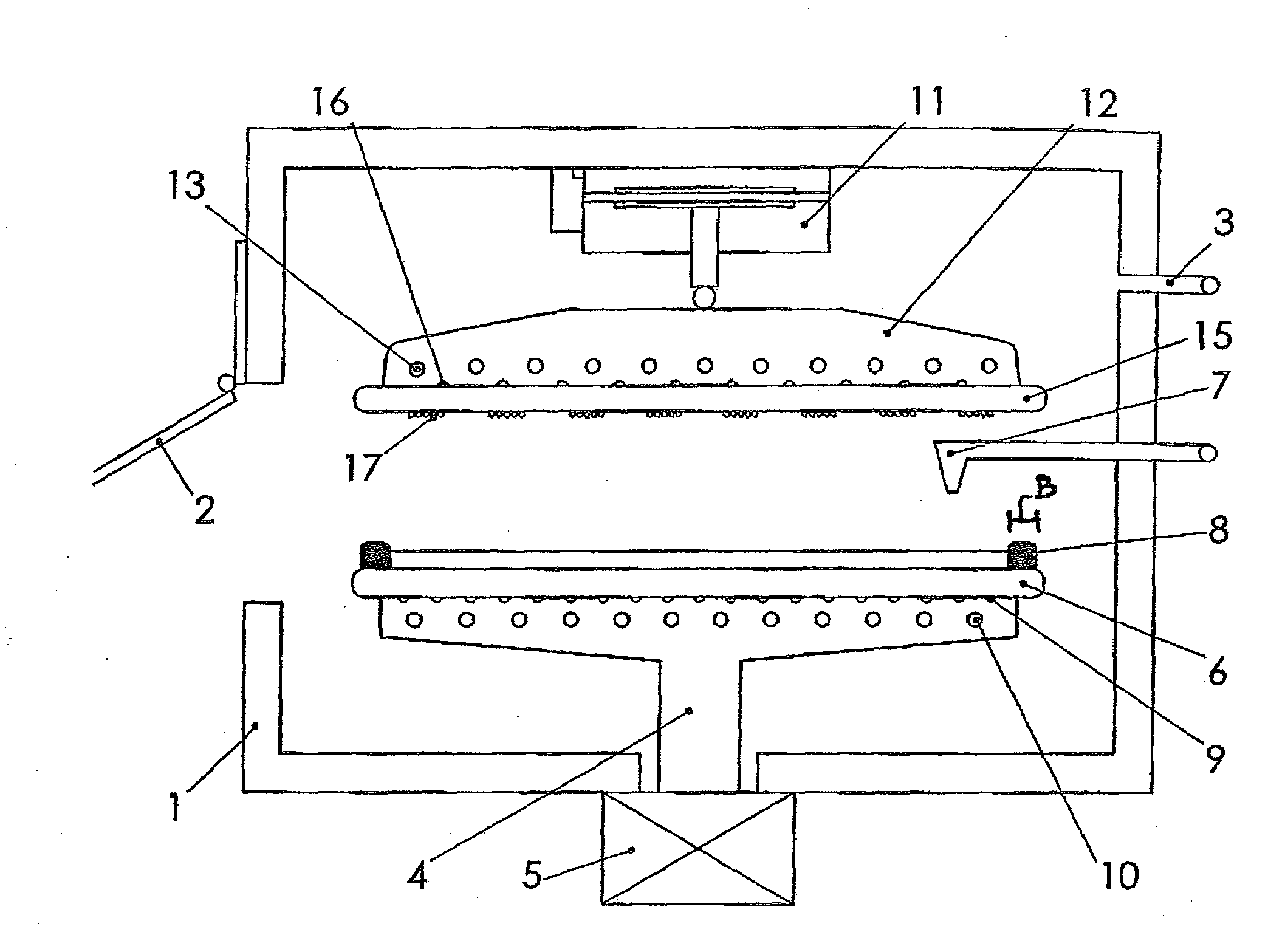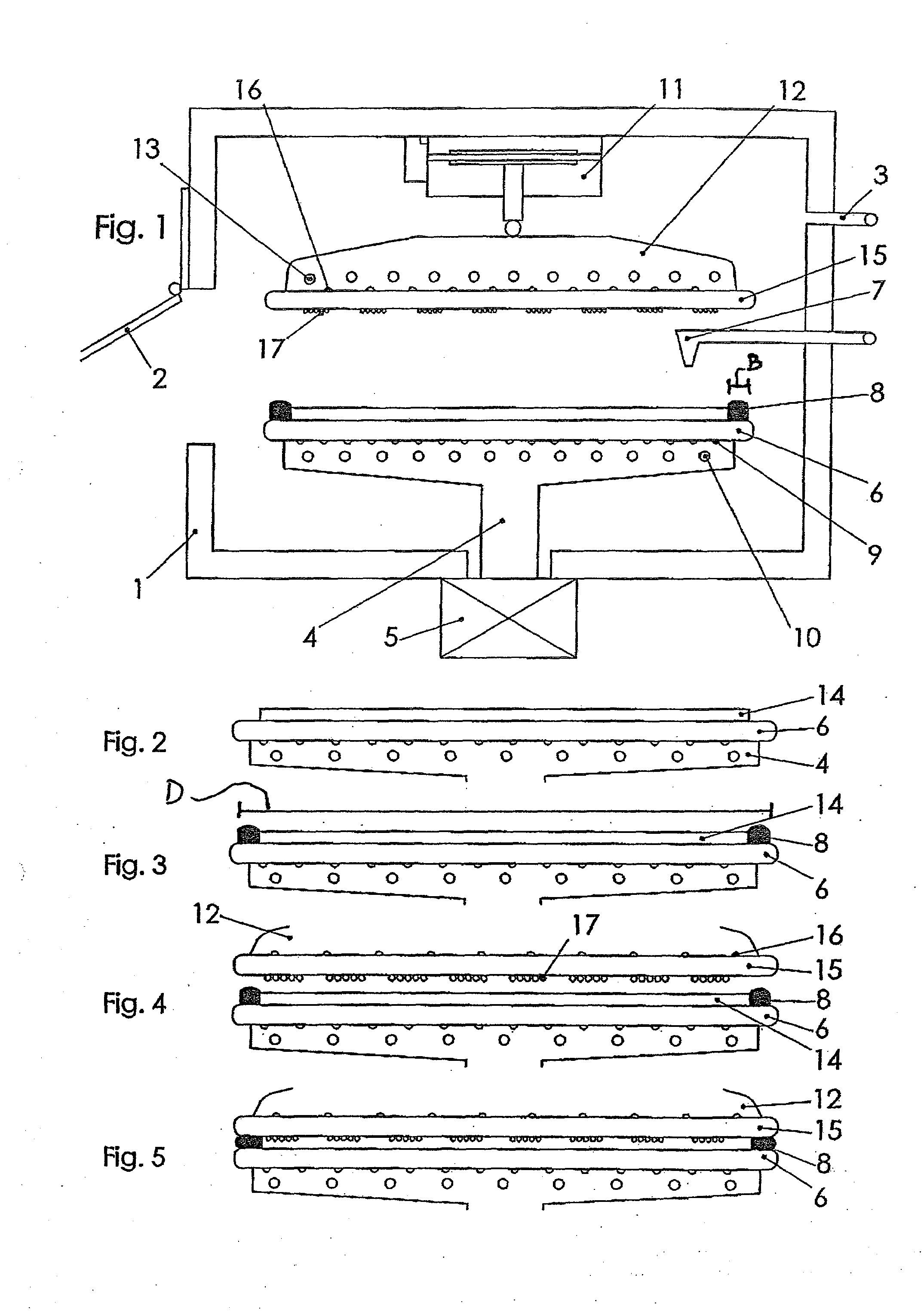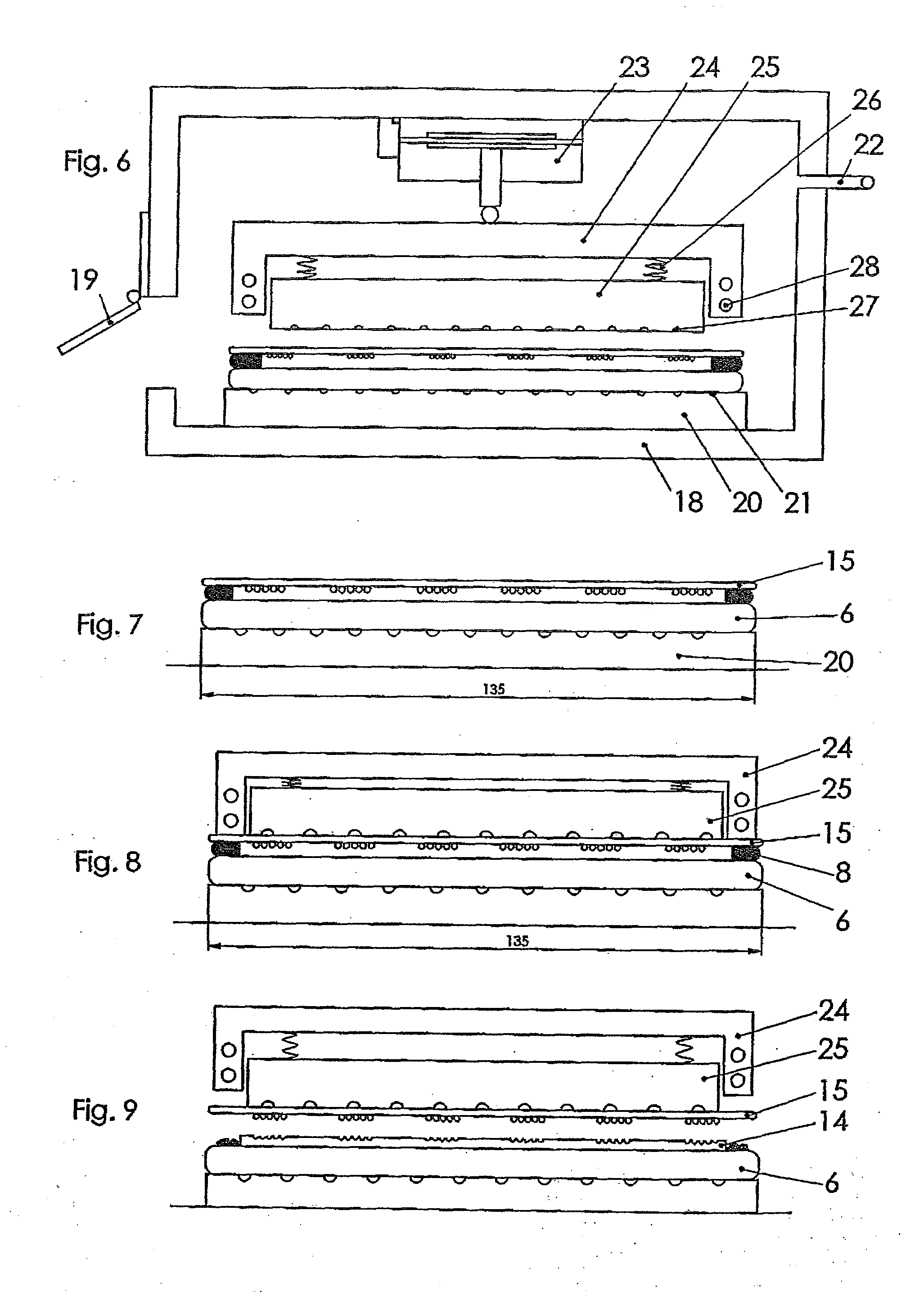Combination of a substrate and a wafer
- Summary
- Abstract
- Description
- Claims
- Application Information
AI Technical Summary
Benefits of technology
Problems solved by technology
Method used
Image
Examples
Embodiment Construction
[0034]In the figures, identical components and components with identical functions are identified by the same reference symbol.
[0035]FIG. 1 shows a device for connecting a wafer 15 with a substrate 6. The device comprises a chamber 1 with a cover 2. The cover 2 serves for tightly closing the chamber 1 relative to the surroundings. The cover 2 simultaneously serves for loading the chamber 1 with the substrate 6 and the wafer 15. The chamber 1 can be evacuated by means of a not-shown vacuum pump and a vacuum line 3 so as to prevent air inclusions when the connection between the substrate 6 and the wafer 15 is produced.
[0036]A receptacle device 4 (chuck) for accommodating the substrate 6 is provided within the chamber 1. The receptacle device is connected to a motor unit 5. The receptacle device 4 can be set in rotation by means of the motor unit 5.
[0037]The device furthermore comprises an adjustable nozzle 7 for applying the fluid adhesive on the substrate 6. Suitable adhesives are ba...
PUM
 Login to View More
Login to View More Abstract
Description
Claims
Application Information
 Login to View More
Login to View More - R&D
- Intellectual Property
- Life Sciences
- Materials
- Tech Scout
- Unparalleled Data Quality
- Higher Quality Content
- 60% Fewer Hallucinations
Browse by: Latest US Patents, China's latest patents, Technical Efficacy Thesaurus, Application Domain, Technology Topic, Popular Technical Reports.
© 2025 PatSnap. All rights reserved.Legal|Privacy policy|Modern Slavery Act Transparency Statement|Sitemap|About US| Contact US: help@patsnap.com



